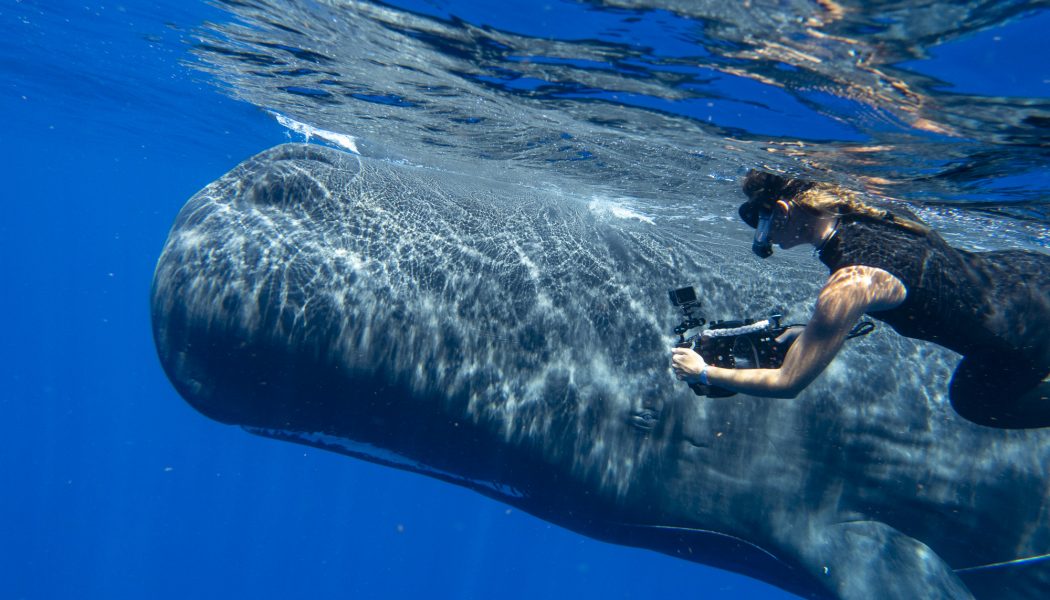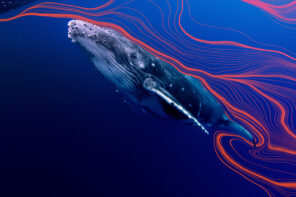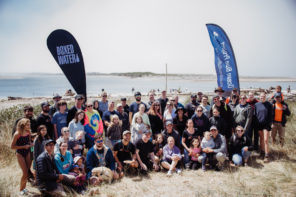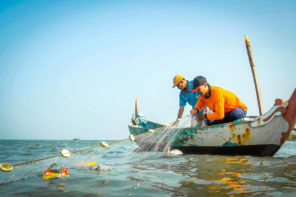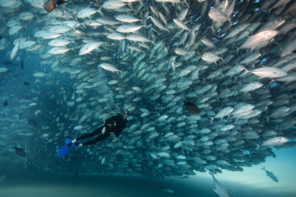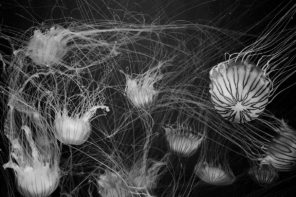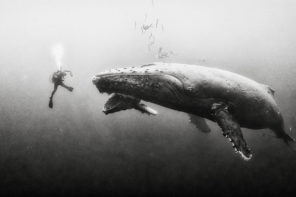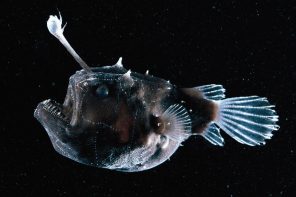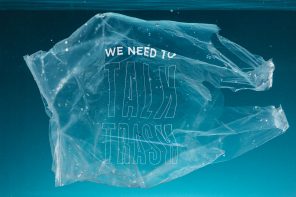The Montauk-based ocean explorer is in search of a very big whale in a vast ocean
Don’t call her Ishmael.
Not many people can say that something that happened when they were less than two years old probably shaped the course of their life. But at a tender age, Gaelin Rosenwaks saw something most go their entire lives without ever witnessing: a sperm whale up close and personal. As a toddler, Gaelin locked eyes with a juvenile sperm whale who came to be stranded in the waters off Robert Moses State Park in Long Island in April 1981. The struggle of the young 25-foot-long whale, who was sick and confused and nearly beached at one point, captured the local imagination with thousands of well wishers watching from the shore in the days that followed marine scientists and veterans nursed Physty—as he became known, a play on the species name Physeter macrocephalus—back to health. Nearly 10 days after he became stranded, Physty swam back out in the open ocean.
Gaelin went on to become a marine scientist herself, living her life studying and dedicated to the ocean and its inhabitants. The thought became tantalizing at some point: Physty must be out there somewhere. A couple of years ago, she set out to find him. The search, and many other people’s stories of his stranding and swim back to sea are now part of a documentary film Gaelin is making called “Finding Physty.”
We chatted with Gaelin about the film, swimming with sperm whales and the meaning of community (both cetacean or human).
What inspired you to start the search for Physty after seeing him all those years ago?
Gaelin: I can’t believe I was so little when I saw Physty because it feels like it was yesterday. It’s still so vivid in my mind. I’ve lived this crazy career of going on really cool expeditions and being in the water with big animals—everywhere from the Arctic to the Antarctic and a million points in between. And then I just happened to meet a guy who studies sperm whales. I had this in the back of my mind for a while: I really want to tell the story of Physty, but I was always busy doing a million different projects. Then I met this guy who was like, “Absolutely, I can put you in the water with sperm whales.”
Who was that?
Gaelin: His name is Pernell Francis and he’s sort of the whale whisper of Dominica. I met him through a friend at an event at the Explorer’s Club where I’m a fellow. And she had known that I was thinking about this sperm whale project and knew that I’m on this big predator kick for a while, trying to get into the water with great white sharks and any kind of sharks, essentially just photographing big animals, which was also a departure from stuff I had done in the past. So she was like, “You need to meet this man.” And I did, and we hit it off. We just became very good friends very quickly. And he was like, “I am the person you need to talk to to make this happen.”
He was able to help me through various steps to getting the permit—I had a scientific proposal. So with a scientific expedition, we got the permits from the government to get in the water with whales. It’s very well regulated down in Dominica. There’s very few people allowed in the water and they all are pretty much all scientific expeditions.
I started piecing together the project. And the more I learned about Physty and the story and how incredible the community that rallied around this baby whale was, I thought, “I need to tell this story and I need to try to reconnect with sperm whales.” Because I had never really done a project on whales and it was just seemed the time to do it.
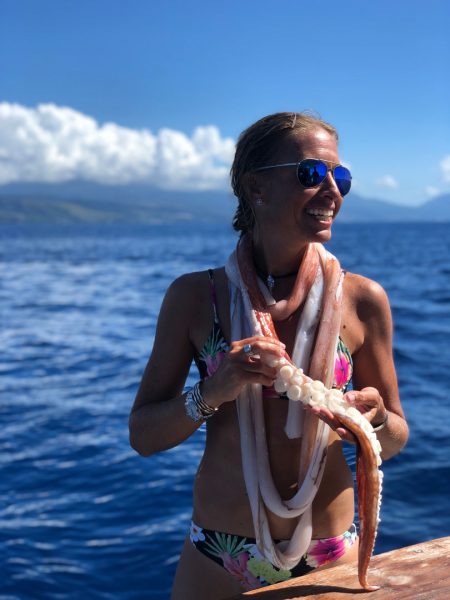
So how did you get that impetus for this “big predator kick” as you said, wanting to get in the water even with the great whites? Where do you think that drive came from?
Gaelin: I love the ocean, anything about the ocean. And I want to be in the ocean. I want to see new things constantly. I want to learn. I had done a lot of big-fish science; I did my graduate work on bluefin tuna—one of the larger fish in the ocean. Then I thought to myself, I’m seeing all of these really cool images. I need to understand a white shark on its own turf. I need to get in the water underwater with these animals, not just see a photograph or a video. I need to make these images myself to get in the head of these animals, just to get a larger picture.
I want to feel small and I want to understand the powerful animals that are here and living in Montauk.
We hear so much about all of these scary predators and nothing in the ocean scares me, almost to a fault probably. I have a healthy respect for the ocean, but once I’m in the ocean, all that fear melts away. And it was just one of those days where I was like, “I want to feel small and I want to understand the powerful animals that are here and living in Montauk.” We have a lot of white sharks. We have a lot of sharks around, and I’ve certainly been in the water with a lot of sharks, but then I started doing specifically targeted expeditions for it.
It was just a time in my life where I was like, “I’m going to do it now. Why not?” They were more photography expeditions—as opposed to full scientific expeditions—that I could do on my own to make these images that I’d been wanting to make for a long time. It was the right timing to go on this, what I call my big predator kick.
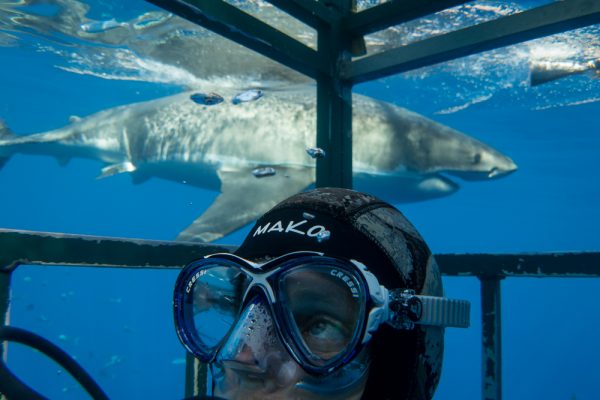
You describe sperm whales as giant predators and there’s even the stories of them attacking boats and things like that—whaling boats at least. Is it because they see them as a threat, they know that they’re hurting them that, they’re highly intelligent and they were fighting back?
Gaelin: Sperm whales are the largest toothed predator on the planet. They are enormous animals and they’ve got big teeth, but they only have teeth on their bottom jaws. They’re always portrayed in all of the whaling images as very ferocious. They are extremely intelligent. So, like you said, if you’re getting a harpoon thrown at you, you are going to defend yourself, and I think you’re going to defend your family. Sperm whales live in families. They mostly are in these family groups, especially the females. If you think about it, if someone’s throwing a harpoon at your mom or your grandma and you’re there, you’d be really angry.
I think that’s anthropomorphizing these animals maybe a little too much, but I certainly know that they … I certainly feel that they would know if it was a threat, and that it might be a defense mechanism to attack the ship. And certainly if you’ve got a harpoon in you, you’re going to thrash around and if the ship got in the way, those tails are powerful.
I wasn’t worried in the water so much, but I definitely steer clear of their tails, because their tails are huge. And one little tiny knock from that tail and you would be hurt, even if it was completely unintentional.
So if you think about it, if you have a harpoon in you and you’re thrashing around, it could easily take down a whaling boat—it would sink boats. You can see how powerful and big these animals are. And I think that’s one of the reasons that I really wanted to tell this story. Most people think about sperm whales, they think about “Jonah and the Whale,” and getting swallowed by a whale. They think about Moby-Dick and all of the ships being taken down, but really these animals are highly intelligent. They’re absolutely incredibly beautiful. They’re curious. And you can see the family attraction between them. So it’s also wanting to demystify that, bring it into a different platform where we can look at these whales in a different way.

How many times have you swam with sperm whales at this point?
Gaelin: We’ve done two expeditions down to Dominica for this film. And I’m hoping to go back even once the film is complete, just because I fell in love with these whales and I want to go visit them and to see more of them. But yeah, so we’ve done 15 in-water days, and our last trip was just incredible. It was 10 days of just nonstop whales. I couldn’t have asked for better interactions, a better experience, more whales, better weather. It really was the complete antithesis of the first trip that we took, where we almost got killed by a flash flood and it was just pouring the whole time. We saw two whales the whole trip. And I definitely think that if COVID didn’t happen, I think we would have been in the water with more whales in different parts of the world, but we’ll be able to tell the story without that.
The first sperm whale that I saw after Physty was actually up in the Norwegian Sea. And I just remember just being so floored by this solitary, huge animal with the 45-degrees spout, so it looks so different and with a very different fluke shape than the humpback that we see here, or that you see more regularly close to shore. They’re really open-ocean predators.
I was working on a film about Atlantic salmon. I was up on an Irish research vessel filming a research project and expedition, and we were cruising up North into the Arctic, and there was a sperm whale just cruising by. A lot of the solitary males will be up there. So who knows, maybe that was Physty.
When you’re in the water with them and sperm whales are swimming, below you, what’s it like when they choose to interact with you?
Gaelin: It’s so difficult to put into words, but I think that I had one interaction with a whale—I think it was our second interaction of the trip—where it was honestly the best moment of my life. And it was 25 minutes of just this mind-meld with this whale where she chose to interact with me completely. She’d locked eyes with me for 25 minutes. She was checking me out. I was checking her out. It was definitely one of those moments where I don’t know what she was curious about, but she was sizing me up. She was clicking on me. I was in her mouth nearly. Her mouth was open and she was making clicking sounds. And then at one point she went vertical and went to sleep. And then she just got up, pirouetted around me. We were like dancing together in the water. It was mind blowing.
And it was just… you felt this incredible intelligence in their eyes. That’s really indescribable. I was looking at this whale, I’m like, “You have so much wisdom. What can I learn from you?” I think it’s really important to point out that I think we talk about swimming with whales and it’s amazing, but it’s also so important to respect them and let them come to you rather than swimming after them. Every interaction that we had, we would drop in the water and literally the whales would swim either towards us or away from us. And I wasn’t swimming at all. I was literally just letting them come to me. And as they came to me, they would either slow down or speed up. That’s how you knew if they wanted to interact. It was totally on their terms.
I was looking at this whale, I’m like, “You have so much wisdom. What can I learn from you?”
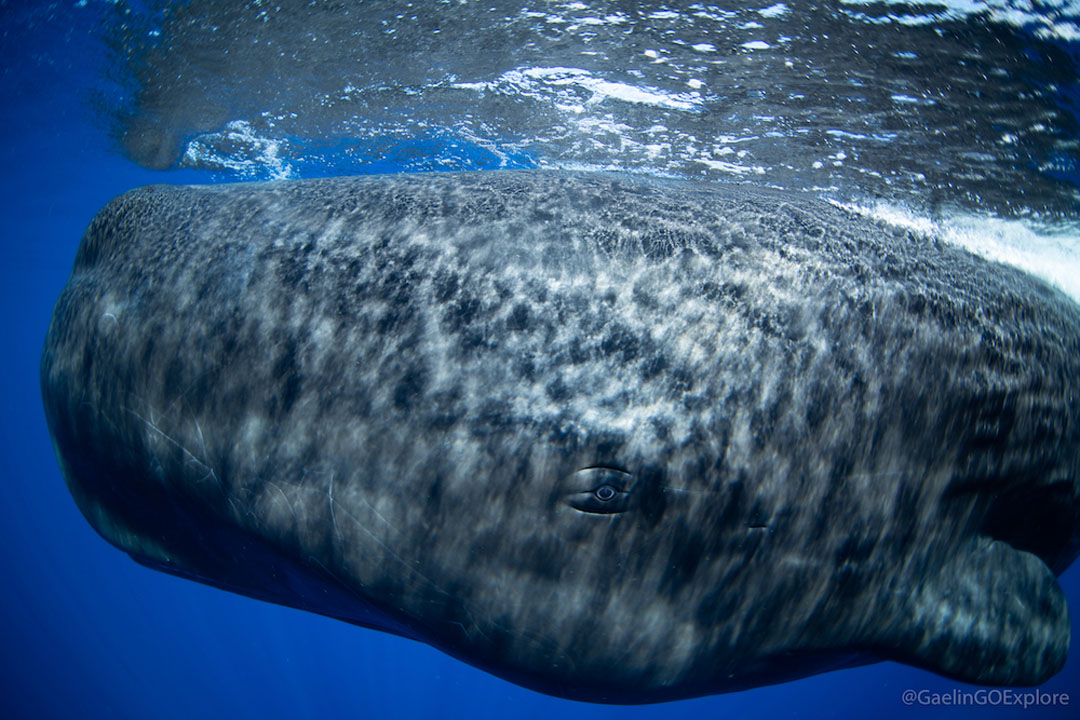
How old were those whales that you interacted with?
Gaelin: They ranged in age from a year old, I think was the youngest calf. And that was a whale named Ariel, who I actually got to name, which is very special. And I think the oldest ones were between 30 and 40 years old, if not older. They live up to 70 from what we know, but possibly older. We were in the water with three generations of whales at one point. Ariel, her mom and her grandma. They don’t reach maturity until they’re well into their teens. They wouldn’t have their first babies. So the grandma was probably in her 40s.
And you had mentioned earlier this matriarchal structure. Is that what it means that the female stay together in a pod and the males go off by themselves?
Gaelin: Yeah, exactly. It’s this crazy cool matriarchal structure where the females pretty much stay together for their entire lives. So you’ll see multiple generations together. They help each other, they take care of each other’s calves and it’s a pretty phenomenal family unit. And then the males will stay with their moms until they’re teenagers, essentially. So until they’re 12, 13 years old. They’ll stop nursing a little bit before that, but they’ll usually stay. And then eventually they get kicked out of the pod or they choose to leave, and then they go and roam the ocean and be teenage boys, I suppose, until they’re old enough to come back and mate with the females. It’s pretty amazing.
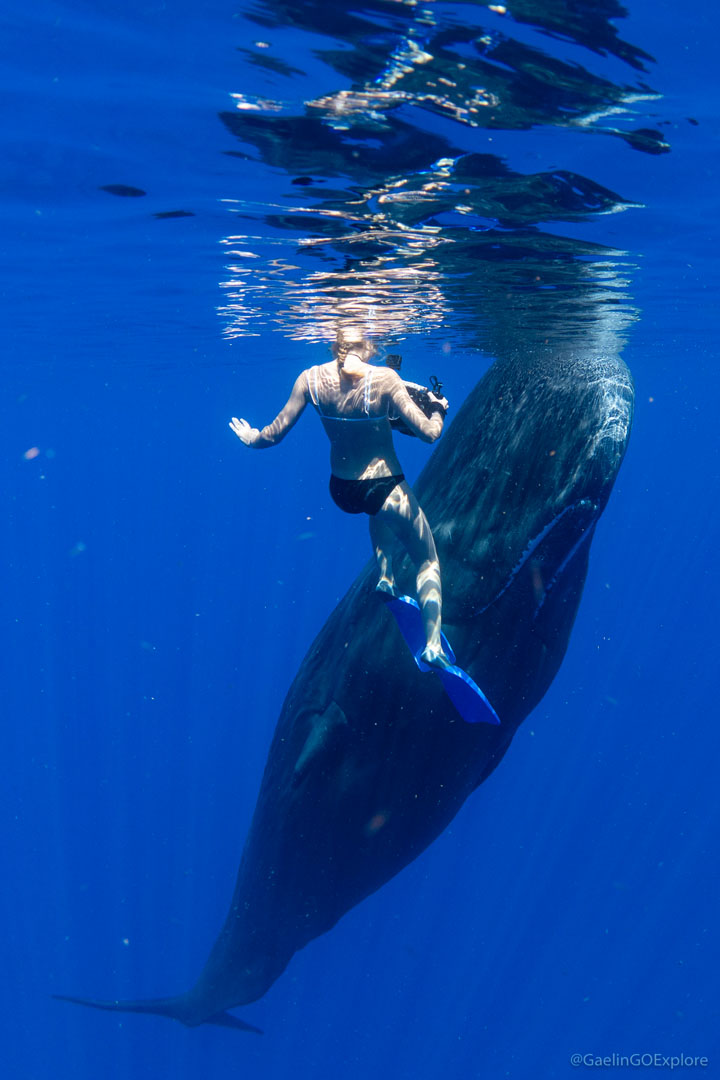
How old was Physty when you saw him?
Gaelin: Physty was probably around five years old. He definitely should have still been with his family. So something happened, we’ll never know what, but he got sick and whether he had lost his family and got sick or was sick so his family left him, or what happened, but he certainly should have been with his family. And then he was taken in by this incredible community of people. And I think that, really the idea of the film is to really emphasize community, whether it’s the human community or a whale community, and to emphasize the importance of family, which is why it’s so important that my mom was with me.
So Physty is nursed back to health, or he gets healthier and he’s back out in the ocean. What are possible scenarios for him? Does he hook on with another pod, or can he be independent at that age?
Gaelin: He definitely could feed at that age already. Hopefully he would find other whales to be with. We won’t know. I like to think that his family was hanging out and could have been there and he could have found his mom again. Chances are that’s pretty slim, but hopefully he found a pod of whales. Or he was big enough that he could probably hunt and feed himself, especially given where he was and the time of year being coming into summer, our waters are teaming with life as we know, living here. Ideally he’d want to be reunited with his mom. I like to think that could happen, but he certainly was in good health when they released him. So roaming the ocean.
Whaling was banned shortly after Physty made his way back out into the open ocean. So he’s got that going for him. What are some of the other biggest threats to sperm whales?
Gaelin: Yeah fortunately, no one’s really hunting sperm whales anymore, which is great. But entanglement from fishing gear and then ingestion of plastics as well, and then ship strikes, boat strikes—anything from ferries, to cruise ships to cargo ships. That would be their biggest vulnerabilities. Certainly we see sperm whales washed up on the beach filled with plastic in their bellies or entangled in a fishing net. And it’s mostly ghost fishing nets now. A lot in the Caribbean and in a lot of places are using fish aggregating devices, which is essentially line hanging in the water to try to aggregate the fish, and they’ll get stuck in it. Sometimes they can free themselves and sometimes they can’t. Those are their biggest threats. And unfortunately, they are pretty major threats to these animals.
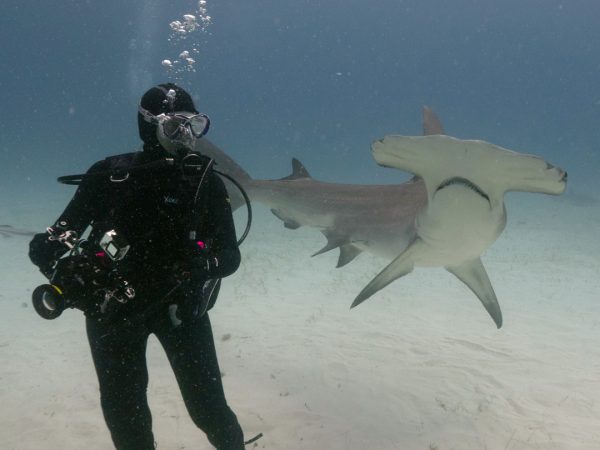
What actions could we all take to make a difference?
Gaelin: I think that the most important thing when we’re thinking about ocean conservation in general is to think about the ocean as part of our planet as a whole. Most people in general wouldn’t throw their trash on the corner of the street as they’re walking. And I think that people often don’t view the ocean in the same way. We need to think about the ocean animals as that collective whole of our planet. Think about them as our neighbors that we’re interacting with and we need to take care of. There’s not one single thing that you can do other than becoming a better steward for the planet and making better choices for yourself individually. Whatever that looks like.
I couldn’t say, “Don’t use a plastic straw. It’s going to save a sperm whale,” because that’s not the case for anything. Not using a plastic straw is a very good thing and not using any single-use plastic is certainly helpful. Certainly not to release any balloons. If I get one more balloon when I’m out on my boat here—I think I pick up at least three or four every time I’m out. But I think there’s little things that you can do. Certainly reducing your single-use plastic is just good in general, and just being a better steward for the planet and thinking about everything as being a part of a whole ecosystem.
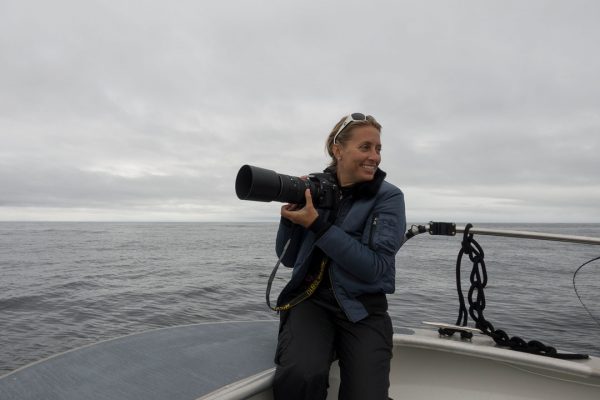
And then a big part of the film is you asking other people for their stories that had that experience that you had of seeing Physty at Robert Moses State Park. What kind of other stories have people shared with you?
Gaelin: I’ve gotten dozens of stories, which has been really nice. And I think that it’s cool that Physty touched so many people in the same way or in a similar way that he touched me. It was just so special. And so many people understood how special it was to have this monster creature from the deep that no one had seen up close like this, except for a whaler with a harpoon in it. And we were so privileged to be able to see this young whale. All of the people who interacted in the water with it certainly felt that way. I’ve been able to connect with a few people who saw Physty and were working on Physty. Obviously at 20 months old, I was just a bystander, but they were all so incredibly moved by the experience by the intelligence that they saw in this animal.
How did that experience you, as a toddler, end up shaping your career?
Gaelin: I think for me I just saw this enormous creature. Obviously, I didn’t know at the time that he was a sperm whale, I just remember so vividly seeing this whale swimming around the basin and then making eye contact with this animal. And it was this really powerful moment that I remember to this day where it was just like, “Wow, this cool thing lives in the ocean.” And maybe totally subconsciously, it just put me on this path to being like, “I just want to learn about the ocean.” And I’m very fortunate that I have parents who love the ocean. So we were always thrown in the ocean all the time and exploring different parts of the ocean. Especially living on Long Island, it was a really easy thing to do.
But for me, I think it just opened up an entire new world that was below the surface. That something this big and interesting and different can be in the ocean was just like, “Wow, it’s amazing.” And then obviously over time, whether or not I realized it, I became a marine biologist. I started studying all of these cool things. I learned about everything I could relating to the ocean. I think Physty sparked my curiosity, and then it just fed itself. The more I’m in the ocean and the more I interact with animals or different ecosystems, I just want to learn more. And I think it’s pretty powerful if you think about one experience being able to throw you into that mindset.

